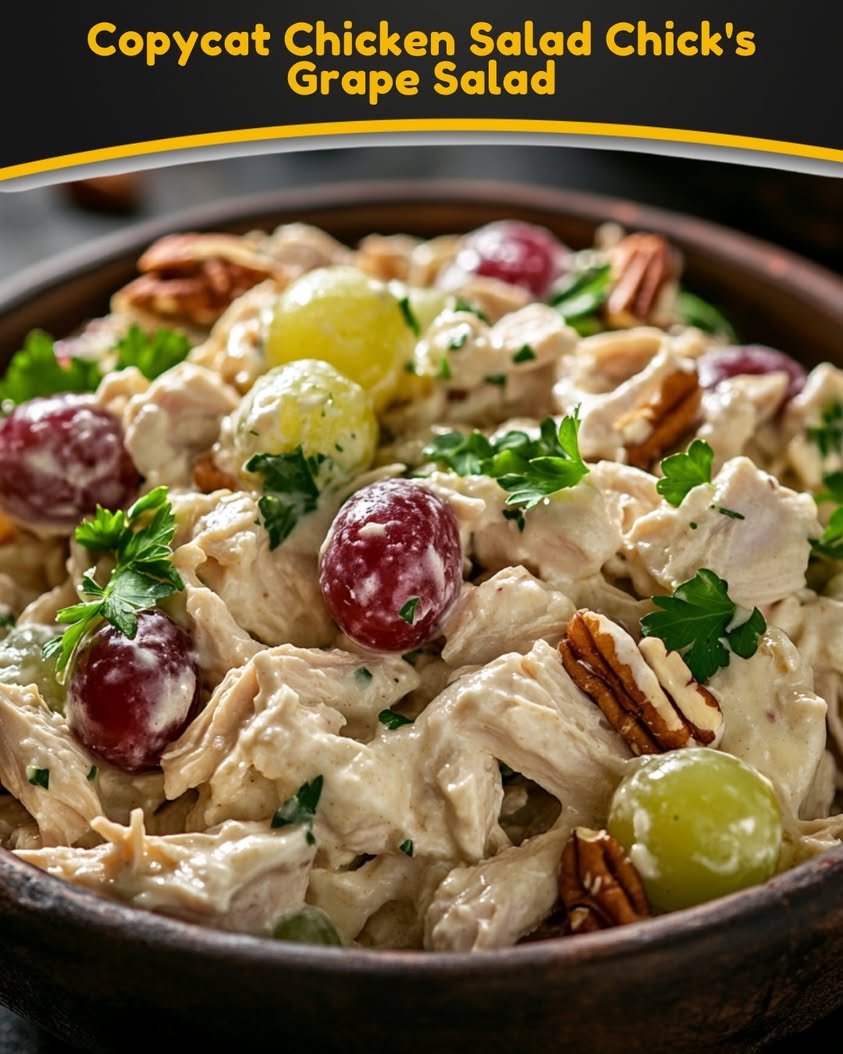Lemon Vinaigrette Recipe: A Zesty Twist for Your Salads
Lemon Vinaigrette is a classic dressing that can elevate any salad from ordinary to extraordinary. With its bright, citrusy flavor and a hint of tanginess, this vinaigrette is not only delicious but incredibly refreshing. Made with simple ingredients, this Lemon Vinaigrette adds a vibrant touch to leafy greens, grilled vegetables, and even seafood dishes, making it a versatile staple in any kitchen.
As you drizzle this zesty dressing over your favorite salads, the invigorating aroma of fresh lemon will awaken your senses, inviting you to savor every bite. Its perfect balance of acidity and sweetness creates a delightful flavor profile that complements a wide range of ingredients, providing a touch of sunshine to your meal. Whether you’re having a casual lunch or hosting a fancy dinner party, this Lemon Vinaigrette will impress your guests and enhance their dining experience.
Quick Recipe Highlights
- Flavor Profile: This vinaigrette is a bright blend of tart lemon juice, fragrant olive oil, and a sprinkle of salt and pepper, resulting in a balanced and refreshing dressing.
- Texture: The Lemon Vinaigrette is smooth and silky, providing an enticing mouthfeel as it coats your salads.
- Aroma: The fresh citrus scent of lemon mingles with the rich aroma of olive oil, creating an appetizing experience before you even take a bite.
- Visual Appeal: The light, golden-yellow hue of the vinaigrette adds a cheerful brightness to any dish it graces, making healthy eating more enticing.
- Skill Level Needed: This easy Lemon Vinaigrette requires no technical culinary skills, making it a perfect choice for novice cooks.
- Special Equipment: All you need is a whisk, a mixing bowl, and perhaps a jar for storage, making this recipe accessible to everyone.
Recipe Overview
- Difficulty Level: This Lemon Vinaigrette is considered easy due to its straightforward preparation and minimal ingredients.
- Category: Ideal for salads, marinades, and even as a light drizzling sauce for grilled meats and vegetables.
- Cuisine: A staple in Mediterranean cooking, it reflects the traditional use of fresh lemon and olive oil in salads throughout the region.
- Cost: Very budget-friendly, as the main ingredients are inexpensive and commonly found in most households.
- Season: Perfect for spring and summer when fresh produce is abundant, enhancing vibrant salads.
- Occasion: Great for everyday meals, picnics, barbecues, and any gathering needing a refreshing touch.
Why You’ll Love This Recipe
When it comes to taste and texture, this Lemon Vinaigrette delivers an explosion of flavor. The tangy lemon cuts through rich ingredients like avocados or cheese, making every bite feel more lively and appetizing. The velvety texture created by emulsifying olive oil with lemon juice creates an inviting sauce that adheres beautifully to greens.
Not only is this dressing delicious, but it is also convenient to prepare. Within just five minutes, you can whip up a freshly-made vinaigrette that is free from preservatives, unlike many store-bought options. This homemade dressing allows you to control the ingredients and customize the flavor to your liking, ensuring you have the best possible experience.
On the nutritional front, using olive oil makes this vinaigrette a heart-healthy choice, packed with beneficial fats. The lemon juice is rich in vitamin C, which supports your immune system, while the minimal ingredients mean fewer calories compared to cream-based dressings. Therefore, it’s a guilt-free addition to any healthy eating plan.
From a social perspective, serving fresh salad dressed with this zesty vinaigrette brings a touch of elegance to any gathering. It’s an excellent conversation starter, inviting guests to share their favorites and variations, while your salad stands out as a lovely side dish on the table.
Lastly, this Lemon Vinaigrette combines all these features while remaining cost-effective. The simplicity and accessibility of the ingredients mean that you can make a large batch for minimal cost, preserving that freshness without breaking the bank.
Historical Background and Cultural Significance
Lemon vinaigrette has its roots in Mediterranean cuisine, where the combination of lemon juice and olive oil serves as a foundation for various dressings. Historically, these ingredients were easily available in the region and have been revered for their flavor and health benefits for centuries. The use of vinaigrettes can be traced back to ancient Roman times when oils and vinegars were commonly mixed to dress fresh salads.
Culturally, the vinaigrette embodies a philosophy of simple yet flavorful food that emphasizes the quality of ingredients over complex preparations. It’s a reflection of Mediterranean diets, which proudly incorporate fresh produce seasoned lightly to let the natural taste shine. This ideology is celebrated in many cultures, but the Lemon Vinaigrette particularly stands out for its lively and fresh profile.
Over the generations, the recipe for Lemon Vinaigrette has evolved into countless variations based on regional taste preferences. Chefs and home cooks alike have added spices, herbs, and other flavorings to customize this classic recipe, enhancing its versatility and appeal across different dishes.
In contemporary cooking, Lemon Vinaigrette remains a key player in healthy eating trends. With a focus on fresh ingredients and wholesome flavors, it’s a dressing that aligns perfectly with nutrition-conscious dining trends, ensuring its place in kitchens and restaurants alike.
Ingredient Deep Dive
Lemon Juice:
Lemon juice is not just a key flavoring agent; it holds significant cultural importance in many cuisines around the world. Historically, lemons have been used to prevent scurvy among sailors and have long been associated with freshness and vitality in dishes. Nutritional benefits of lemon juice include high vitamin C content, antioxidants, and potential digestive aids. When selecting lemons, look for ones that feel heavy for their size and have a vibrant yellow color. Store lemons in a cool, dry place for up to a week, or refrigerate for longer freshness. Lemon juice can be substituted with lime juice for a different citrusy flavor.
Olive Oil:
Olive oil is a staple in Mediterranean cooking, embodying both cultural traditions and health benefits. Its history stretches back thousands of years, revered for its flavor and nutritional value. Rich in monounsaturated fats, it’s linked to numerous health benefits, including heart health and anti-inflammatory properties. When buying olive oil, choose extra virgin for the best quality, characterized by its fruity flavor and light peppery finish. Store it in a dark, cool place, away from sunlight to maintain its freshness. If you’re out of olive oil, alternatives include avocado oil or canola oil, though they may alter the flavor slightly.
Common Mistakes to Avoid
- Not balancing the acidity: Ensure you have the right balance of lemon juice and oil, as too much acidity can overpower the dressing.
- Using poor-quality olive oil: The flavor of the oil plays a significant role; use high-quality, fresh extra virgin olive oil for the best results.
- Inadequate emulsification: If the oil isn’t mixed in properly with the lemon juice, you’ll end up with a separation that reduces flavor integration.
- Adding too much salt at once: Salt can enhance the vinaigrette but should be added gradually to avoid oversalting.
- Not adjusting flavors: Taste your vinaigrette and tweak it as needed with additional salt, pepper, or herbs for optimal flavor.
- Letting it sit too long: Fresh vinaigrettes are best used immediately or within a few days, as flavors can diminish over time.
- Forgetting to shake or whisk: Always whisk or shake well before serving to recombine the ingredients that may have settled.
- Neglecting to choose seasonal ingredients: Fresh, seasonal ingredients will elevate the vinaigrette’s overall flavor and quality.
Essential Techniques
Emulsifying:
Emulsifying is crucial for creating a stable vinaigrette. It involves mixing two substances that typically don’t blend well, like oil and water-based liquids. To master this, whisk or shake vigorously until you achieve a creamy consistency. Watch for any separation, which signals the need to whisk again. Use a jar with a lid for easy shaking, enjoying a visually appealing vinaigrette.
Balancing Acidity:
Mastering the balance between acidity and richness is essential for an outstanding vinaigrette. Start with a ratio of three parts oil to one part acid, adjusting based on preference. Taste as you go, noting how flavors develop. Remember, you can always add more acid, but removing it is challenging, so add slowly and carefully.
Pro Tips for Perfect Lemon Vinaigrette
1. Always use fresh lemons for the best flavor; bottled lemon juice lacks the vibrancy of fresh-squeezed.
2. Experiment with different herbs like basil or parsley to give your vinaigrette a unique twist.
3. Keep a jar of vinaigrette in the fridge for quick use, but remember to shake well before serving.
4. Adjust the garlic levels for a stronger or milder flavor, based on personal preference.
5. Try adding a teaspoon of honey for a hint of sweetness that complements the acidity nicely.
6. Use high-quality extra virgin olive oil, as it makes a significant difference in taste.
7. Consider adding Dijon mustard for a more emulsive and flavorful base.
8. Make sure to taste your vinaigrette with the final dish; adjustments can enhance compatibility.
Variations and Adaptations
For a regional twist, consider a Greek Lemon Vinaigrette, incorporating herbs like oregano and dill, which pairs beautifully with feta cheese and olives. Seasonal adaptations might include adding fresh berries in the summer or roasted garlic in the fall for depth and warmth in flavor. If you’re looking for dietary modifications, try using avocado oil as a substitute for olive oil to align with dietary preferences or allergies. For flavor variations, consider citrus mixes such as lime or orange juice for a different profile, and for texture modifications, adding a finely chopped shallot can elevate the vinaigrette.
Serving and Presentation Guide
Plating is key when serving meals dressed with Lemon Vinaigrette. Drizzle the vinaigrette over a bed of greens and garnish with colorful vegetables for visual appeal. A sprinkle of fresh herbs can elevate the aesthetic and flavor traits. Serving on a white plate enhances the color contrast of the vibrant salad. Temperature considerations are important; serve the vinaigrette at room temperature for optimal flavor release, enhancing the overall dining experience. Be mindful of portion control; a little goes a long way in terms of flavor, so start with less and increase as desired.
Wine and Beverage Pairing
Pair your Lemon Vinaigrette-dressed salads with a crisp Sauvignon Blanc, which complements the citrus notes beautifully. For a non-alcoholic alternative, try sparkling water with a splash of lemon for refreshing hydration. If you enjoy coffee or tea, serve a light herbal tea, such as mint, to enhance the fresh flavors on your plate without overshadowing them, ensuring a harmonious meal experience.
Storage and Shelf Life
To store your Lemon Vinaigrette, use an airtight jar or container in the refrigerator. It will generally last for about a week. Monitor the texture and aroma, discarding if it develops an off smell or separation. It’s best served fresh, but if you need to reheat any leftovers, gently shake or whisk before using. Avoid freezing your vinaigrette, as it can change the texture and flavor upon thawing.
Make Ahead Strategies
For efficient meal prep, prepare your Lemon Vinaigrette ahead of time and store it in the refrigerator. The flavors often deepen and improve after melding together for a few hours. It’s best to mix it the day before serving, allowing the dressing to be at its peak flavor. If using ingredients like garlic, consider adding them just before serving to maintain their fresh flavor. Make sure to give it a good shake before drizzling over fresh greens or vegetables to refresh its profile.
Scaling Instructions
If you want to halve this recipe, simply reduce each ingredient proportionally and you’ll still achieve the same great taste. Doubling or tripling the recipe is also a breeze, but be sure to mix in a larger bowl to maintain an even consistency. When scaling, account for any adjustments in timing during preparation, as larger quantities may require a slightly longer mixing time. Additionally, make sure to use larger storage containers to accommodate increased volumes while maintaining freshness.
Nutritional Deep Dive
When analyzing the nutritional value of Lemon Vinaigrette, look for a balance of macronutrients with healthy fats coming predominantly from olive oil. It’s low in carbohydrates, making it ideal for many dietary plans. Focus on micronutrient contributions, particularly the vitamin C from lemon juice. Incorporating this vinaigrette can provide health benefits like improved heart health from monounsaturated fats and antioxidants. If you’re managing portions, be mindful that a tablespoon or two is usually sufficient to dress a full salad.
Dietary Adaptations
For those seeking gluten-free options, this Lemon Vinaigrette is naturally gluten-free, making it perfect for a wide audience. If dairy-free is a requirement, rest assured that all the ingredients fit within this guideline. This recipe can also easily adapt to vegan diets through the exclusion of any non-vegan ingredients, keeping it light and fresh. For low-carb or ketogenic diets, the use of olive oil ensures it remains within the limits while maintaining flavor. Paleo-friendly enthusiasts can enjoy this vinaigrette purely as is, highlighting its simplicity and wholesome ingredients.
Troubleshooting Guide
If you encounter texture issues with your dressing, consider emulsifying again by whisking or shaking vigorously. If you find the flavor too sharp, reduce the acidity by adding more oil until it reaches your preferred balance. If it’s too oily, increasing the lemon juice can help. For equipment challenges like insufficient blending, experiment with a blender to achieve an even texture. Observing ingredient substitutions can also prevent issues; ensure alternatives maintain the same consistency and flavor profile.
Recipe Success Stories
Community feedback on this Lemon Vinaigrette often highlights its simplicity and taste, with readers sharing their personal variations. One individual shared a delightful adaptation using blood orange juice, creating a visually stunning alternative that has become a dinner party favorite. Suggestions from readers emphasize the versatility of the recipe, encouraging creativity and personalization with fresh herbs and additional spices. Also, those documenting their culinary journey often share photos of their beautifully plated salads, showcasing the visual appeal of this recipe.
Frequently Asked Questions
Can I use bottled lemon juice?
While bottled lemon juice is convenient, it usually lacks the freshness and vibrant flavor of freshly squeezed lemons. For best results, always opt for fresh lemons to elevate your vinaigrette.
How long can I store Lemon Vinaigrette?
Homemade Lemon Vinaigrette can be stored in the refrigerator for up to a week. Ensure it’s in an airtight container for optimal freshness and quality over time.
What can I mix this vinaigrette with?
This vinaigrette is incredibly versatile and can be used with mixed greens, grilled vegetables, seafood, or even as a marinade for chicken or fish. It pairs well with a variety of dishes.
Can I make this vinaigrette vegan?
Yes! This Lemon Vinaigrette is naturally vegan and doesn’t include any animal products, making it suitable for those following a plant-based diet.
Is Lemon Vinaigrette gluten-free?
Absolutely! All the ingredients in this recipe are gluten-free, which makes it a great option for those with gluten sensitivities.
How do I adjust the flavors?
You can adjust the flavors depending on your preferences; for instance, adding more lemon juice for tanginess or a little honey for sweetness can help customize it to your taste.
Can I freeze Lemon Vinaigrette?
It’s not recommended to freeze Lemon Vinaigrette, as it may alter the texture and separation of the oil and lemon juice upon thawing.
Is it necessary to whisk the vinaigrette before use?
Yes, whisking or shaking is necessary as the ingredients can separate when stored. Mixing them before serving ensures a more unified flavor every time.
Can I add garlic to the vinaigrette?
Absolutely! Adding minced garlic to your Lemon Vinaigrette will introduce a robust flavor that pairs nicely with the citrus notes. Adjust according to your preference for garlic intensity.
How can I make it creamier?
For a creamier texture, consider adding a dollop of yogurt or mayonnaise, which will give your vinaigrette a richer consistency while maintaining its delightful flavor.
Additional Resources
If you enjoyed this Lemon Vinaigrette recipe, you might be interested in related recipes such as classic Caesar dressing or herb-infused vinaigrettes. Explore technique guides for perfect salad tossing and ingredient information on choosing the right oil for your dressings. Additionally, consider checking out equipment recommendations on items that make salad prep more efficient, such as salad spinners and high-quality whisks.
Join the Conversation
We invite you to share your thoughts on this Lemon Vinaigrette in the comments below! If you’ve made any variations, we’d love to hear about them. Feel free to share your photos and engage with others who have tried this recipe. Your feedback helps build a supportive community of food lovers eager to learn and swap ideas!
The Recipe
Lemon Vinaigrette
Serves: 4
Prep Time: 5 mins
Cook Time: 0 mins
Total Time: 5 mins
Kitchen Equipment Needed
- Whisk
- Bowl
- Jar with lid for storage
Ingredients
- 1/4 cup fresh lemon juice
- 3/4 cup extra virgin olive oil
- Salt and pepper to taste
- 1 teaspoon Dijon mustard (optional)
- 1 clove minced garlic (optional)
Directions
- In a bowl, whisk together the lemon juice, salt and pepper, and optional Dijon mustard and minced garlic until combined.
- Slowly drizzle in the olive oil while continuing to whisk to achieve an emulsion.
- Taste and adjust seasoning if necessary.
- Transfer to a jar for storage or directly drizzle over your salads.
Recipe Notes
- This vinaigrette can be made ahead and stored in the refrigerator for up to a week.
- Feel free to experiment with herbs and spices to personalize your vinaigrette!
- If it separates, simply whisk or shake again before use.










